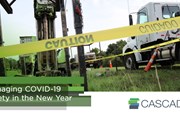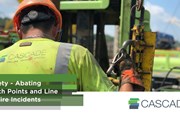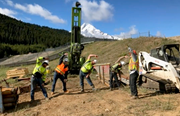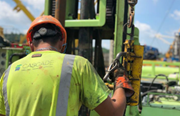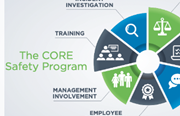Observing Safety: How Observation Programs Can Improve Safety Efforts at the Individual Level
By: CascadeThere are inherent hazards on every drilling and environmental remediation site, but they can be mitigated through a robust safety program. In a recent webinar, Management Led Behavior Based Observation Programs, we discussed how and why management-led behavior-based observation programs can be an especially effective tool for prioritizing safety, identifying hazards, and reducing incidents.
If you missed the live webinar, you can watch the recording now. If you don’t want to miss out on future webinars from our experts, please update your email preferences to include our webinar communications.
A few questions from participants came up during the webinar. In this blog post, presenter Michael Gentry answers those questions.
WHY DON’T YOU CONCENTRATE ON SAFE BEHAVIORS AS OPPOSED TO UNSAFE BEHAVIORS?
Our program is not meant to duplicate your traditional behavior-based safety efforts. Instead, our approach is to start with the goal of identifying and improving safety at the individual level—specifically, for each employee to improve his or her ability to identify and control risk. Concentrating on at-risk behavior shouldn’t carry a negative connotation; in our system, there isn't a “negative” or “positive” observation, because we believe the behavior is not intentionally negative or positive. We believe the at-risk behavior indicates that a skill needs improvement.
HOW ARE THE MANAGERS THAT LEAD THE OBSERVATIONS QUALIFIED?
Individuals who hold operational leadership positions are promoted based on years of exceptional performance as well as safety efforts and effectiveness. Our managers retain a high level of risk recognition and control aptitude—otherwise, they quite frankly would not belong in leadership positions managing people and projects that have inherent risk. Their qualification for leading observations are the years of stellar performance reviews and practical work task experience that led them to being hired or promoted into their roles. Their experience makes them terrific evaluators and also fantastic coaches and mentors.
WHAT LEVEL OF MANAGEMENT PARTICIPATES IN THIS PROGRAM?
Everyone in our management and leadership team, up to our CEO, has a monthly, quarterly and annual quota to meet, ensuring every level of management actively participates in our observation program.
FOR SMALL BUSINESSES THAT DO NOT HAVE AN IN-HOUSE EHS PROFESSIONAL, DO YOU HAVE ANY RECOMMENDATIONS?
For small businesses that do not have in-house safety representation, there are a number of avenues for acquiring safety assistance. Most larger and mid-range insurance carriers and brokers retain qualified safety consultants to assist with safety requests. Even if your specific broker or carrier does not, you can go to Marsh & McLennan or AON and contract direct.
Additionally, there are many independent safety consultants available. You’ll want to check references, as building a safety program with a level of sophistication takes specialized background and education.
A management-led behavior-based observation program has the potential to benefit your organization in many ways, including:
- Providing quantifiable field level safety performance evaluation for either a specific location, area, region or company-wide
- Identification of trends occurring on a specific site or in a specific region or with a specific supervisor
- Measurement of efficacy and/or improvement of safety efforts
If you’d like to learn more about structuring and implementing such a program, watch the webinar recording or reach out to Michael Gentry.

